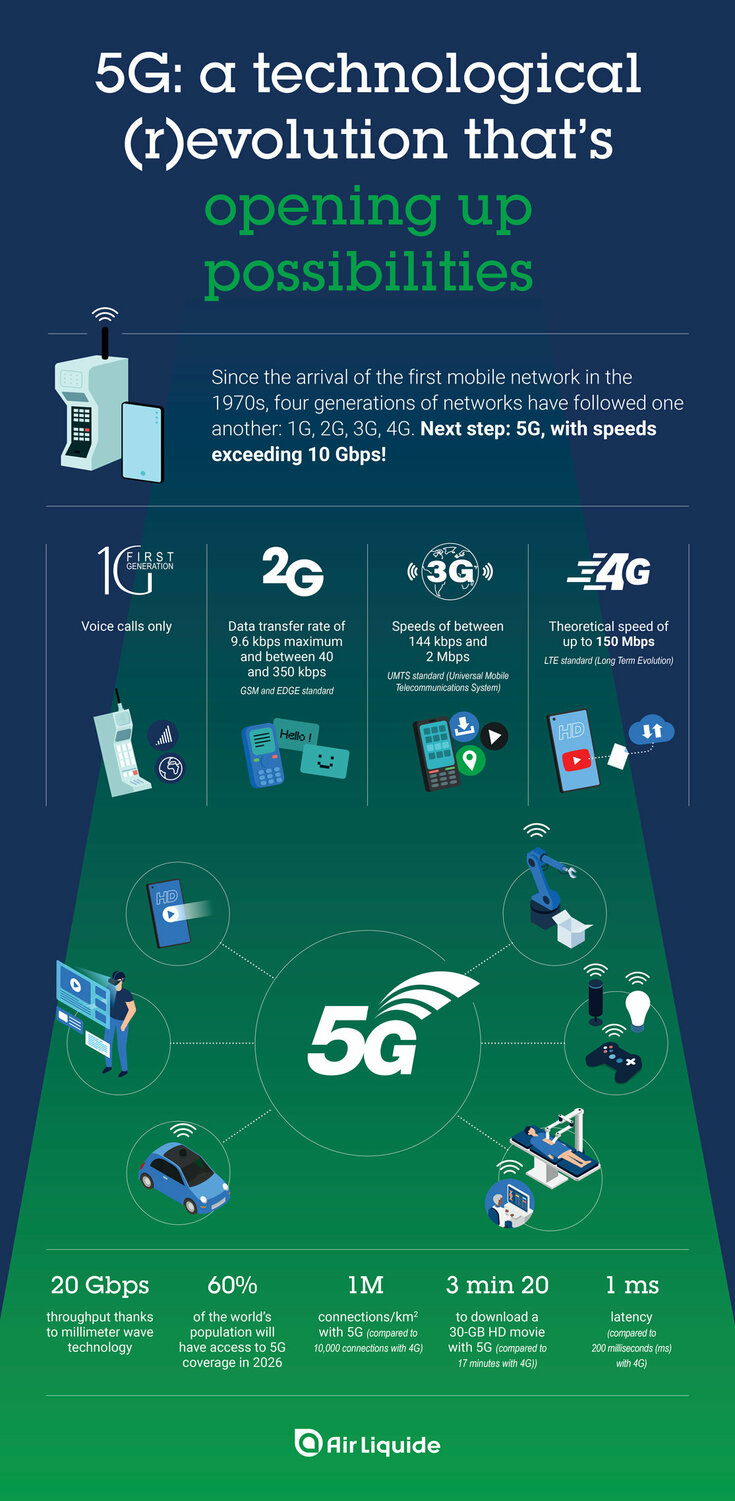Automated cars, intelligent production lines organising, and remote medicine: these are just some of the applications for 5G mobile broadband which – as futuristic as they sound now – will have been made possible by the new networks before the end of the decade.
The surge in demand unleashed by the 5G roll-out is good news for AirLiquide’s customers in the semiconductor industry. So how exactly does the technology behind the new infrastructure work? Join us as we look into radio frequencies, targeted transmission, and antenna arrays in the fifth-generation mobile networks.
As revolutionary as the effect of 5G will be, its technology is by no means hard to explain. At its heart, the raft of 6,400 patents which make up the standard breaks down into three key technologies – increased spectrum, beamforming, and massive MIMO antennas. The principles behind these three elements have been understood for decades: it is the fact that the technical and engineering challenges associated with their implementation have now been mastered which has made 5G feasible – and which will unleash the full power of their combined effects.
How exactly does the technology behind 5G work?
Increased spectrum is the simplest technical principle: while existing mobile networks are in the 0-6 GHz spectrum, 5G will see them expand up to 52.6 GHz. The benefit of opening up these higher frequencies is that they are faster (literally: more frequent) and so enable down- and upload speeds into the tens of gigabytes per second at low latency (i.e. with no delay). The one drawback of using this spectrum is that each station can only cover a limited distance compared with lower frequencies, and that building penetration is poorer. This means that 5G will lead to a larger number of base stations, especially on the outside of large buildings which contain lots of users and devices.
Beamforming can be taken literally: it is about forming beams – i.e. directing radio waves to a target rather than simply broadcasting them in all directions. Put simply, this technology identifies the most efficient path from antenna to receiver, increasing signal quality.
Massive MIMO antennas sound more complicated than they are: MIMO stands for “Multiple-Input, Multiple-Output”, and they work on the principle of providing multiple – think hundreds – of antennas in one array. Thus far, each 4G phone mast has a few antennas to serve hundreds or potentially thousands of devices at any one time. MIMOs attempt to switch this ratio round: if transmitters are equal to or outnumber users, no users will have to wait. In figures, this means that where 4G allows an average of 100,000 connections per square kilometre, 5G will allow a million connections in the same surface area. As well as putting an end to calls cutting out and mobile data dropping in busy areas, it will allow around ten times as many devices to connect: and since people will not have ten times as many smartphones, this opens up capacity for things to connect to the internet, too.
Main differences between 4G and 5G
The effects of 5G
Which brings us on to the effects 5G will have. As the increased spectrum allows for faster speeds and lower latency, beamforming ensures better signal quality, and MIMOs provide access to more devices with no interruptions, 5G opens up a range of possibilities which, until now, seemed like science fiction: automated cars plying the roads, intelligent production lines organising their own supply chains, and surgeons using in-situ robots to carry out complex procedures remotely. To find out more about what is in store, read our article about the future of 5G applications, the infrastructure for which is being installed right now, as you read.





